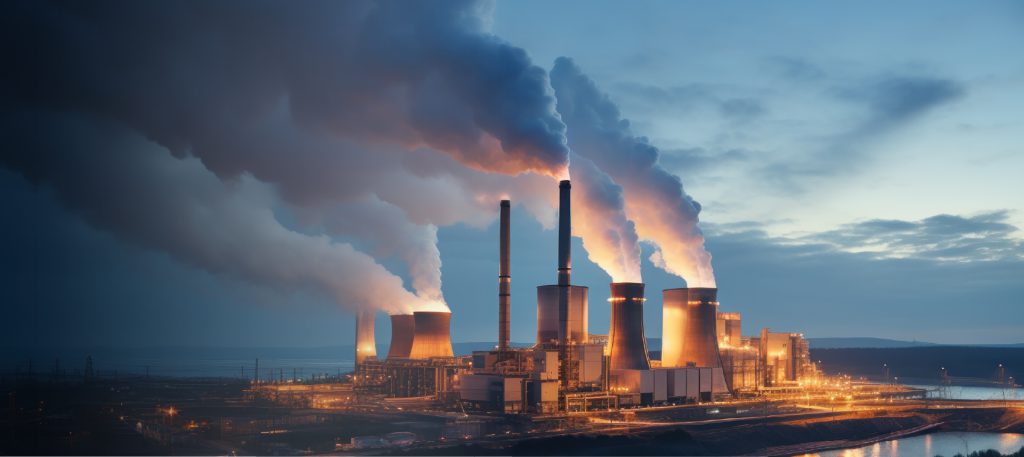


Le volume d'air correspond à la quantité d'air qu'un dépoussiéreur peut traiter par unité de temps. Le calcul précis du volume d'air nécessaire à une usine est la première étape de la sélection. Les différents processus de production et l'échelle des ateliers exigent des volumes d'air différents. Par exemple, les ateliers de traitement des machines à grande échelle génèrent beaucoup de poussière lors du découpage et du meulage. Ils ont besoin d'un dépoussiéreur à grand volume d'air pour capturer et purifier la poussière en temps voulu. Si le volume d'air est trop faible, il ne peut pas couvrir l'ensemble de l'atelier, ce qui laisse de la poussière dans certaines zones. Cela affecte l'environnement de l'atelier et la santé des travailleurs. Si le volume d'air est trop important, les coûts d'équipement augmentent et l'énergie est gaspillée.
Prenons l'exemple d'une usine automobile. Ses ateliers de soudure et de peinture ont besoin de dépoussiéreurs ayant des volumes d'air différents. L'atelier de soudure comporte de nombreux points de soudure et des sources de poussière dispersées, ce qui nécessite un système à grand volume d'air pour aspirer rapidement la fumée de soudure. L'atelier de peinture produit moins de poussière mais a besoin d'une qualité d'air élevée. Il a donc besoin d'un dépoussiéreur avec un volume d'air approprié pour garder l'atelier propre.
Les caractéristiques de la poussière comprennent la taille des particules, la composition chimique et l'adhésivité. Les différents types de poussières nécessitent des dépoussiéreurs différents pour un traitement efficace. Par exemple, les poussières de taille nanométrique contenant de petites particules nécessitent un équipement de filtration de haute précision, tel qu'un filtre de dépoussiéreur avec un papier filtrant à haute efficacité, pour les intercepter efficacement. Les poussières collantes peuvent rapidement obstruer les filtres ordinaires. Il convient donc de choisir un dépoussiéreur doté d'une fonction spéciale de nettoyage des cendres ou adapté aux poussières collantes.
Dans l'industrie chimique, la poussière est souvent corrosive. Les matériaux des dépoussiéreurs doivent donc présenter une bonne résistance à la corrosion. Certaines entreprises chimiques choisissent des dépoussiéreurs en acier inoxydable ou dotés d'un traitement anticorrosion pour garantir un fonctionnement stable à long terme. Par ailleurs, pour les poussières inflammables et explosives (par exemple, la poussière de farine dans les moulins ou la poussière de charbon dans les mines), il convient de choisir des dépoussiéreurs antidéflagrants afin d'éviter les accidents de sécurité.
Les conditions d'implantation de l'usine sont également des facteurs clés dans la sélection. Il s'agit notamment de la taille de l'atelier, de sa hauteur, de son agencement et de l'emplacement de l'installation de l'équipement. Si l'espace de l'atelier est limité, choisissez un dépoussiéreur compact, comme un modèle portable ou mural, pour gagner de la place. Les grandes usines peuvent disposer de suffisamment d'espace pour installer un système de dépoussiérage central à grande échelle.
L'emplacement de l'installation influe sur les performances de l'équipement. Placez le dépoussiéreur aussi près que possible de la source de poussière afin de réduire la diffusion de la poussière et d'améliorer l'efficacité du captage. Il faut également tenir compte de l'accès à la maintenance et de l'espace d'inspection pour garantir des réparations rapides en cas de défaillance.
Le budget est une considération pratique pour chaque usine lors de la sélection. Les prix des dépoussiéreurs varient en fonction de la marque, des spécifications et des fonctions. Lors de l'établissement d'un budget, il convient de tenir compte non seulement des coûts d'acquisition, mais aussi des coûts d'exploitation, d'entretien et de durée de vie.
Certains dépoussiéreurs bon marché présentent des avantages en termes de coût initial, mais peuvent avoir une consommation d'énergie élevée ou nécessiter un entretien fréquent, ce qui entraîne des coûts élevés à long terme. Les dépoussiéreurs haut de gamme, bien que plus chers, offrent une grande efficacité, des économies d'énergie, une stabilité et une facilité d'entretien, ce qui permet à l'usine de réduire ses coûts à long terme. Il convient donc d'équilibrer le budget en comparant de manière approfondie les performances et les coûts des équipements afin de choisir le produit le plus rentable.
Par exemple, une petite usine au budget serré a choisi un dépoussiéreur à monter soi-même. En l'assemblant et en le mettant au point elle-même, elle a pu répondre à ses besoins de base en matière de dépoussiérage tout en réduisant ses coûts. Les grandes entreprises, qui privilégient la performance et la stabilité, choisissent des dépoussiéreurs industriels de marque réputée. Malgré des prix plus élevés, ils garantissent une production fluide et des environnements d'atelier conformes.
En conclusion, les usines doivent tenir compte de quatre facteurs clés lors de la sélection des dépoussiéreurs : le volume d'air, les caractéristiques de la poussière, les conditions du site et l'équilibre budgétaire. Ce n'est qu'en tenant compte de tous ces aspects qu'elles pourront choisir les dépoussiéreurs les mieux adaptés pour un dépoussiérage efficace et une production respectueuse de l'environnement.
